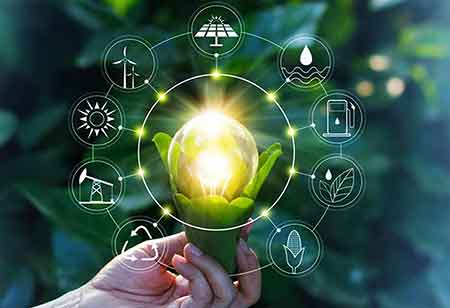Thank you for Subscribing to Energy Business Review Weekly Brief
Leading Energy Developments in 2022
Although it would be lovely to believe that everyone wants to preserve the world, substantial financial incentives exist. By 2030,

By
Energy Business Review | Wednesday, January 19, 2022
Stay ahead of the industry with exclusive feature stories on the top companies, expert insights and the latest news delivered straight to your inbox. Subscribe today.
The number of initiatives investigating new techniques of converting organic matter into energy and their practical applications will increase in 2022.
FREMONT, CA: Today, practically everyone agrees that humans must abandon the use of fossil fuels to mitigate the damage people are causing to the earth and ecosystem. As the energy sector seeks sustainable or renewable alternatives to coal, oil, and gas, several scientific and corporate advancements have spawned.
Although it would be lovely to believe that everyone wants to preserve the world, substantial financial incentives exist. By 2030, the market for renewable energy is expected to increase from $880 billion to over $2 trillion. In addition, there are substantial political incentives due to the increased awareness of the significance of environmental and social governance (ESG) issues.
The extent of the transition from fossil fuels to renewable energy sources is projected to reach a new high in 2022. It is also the year when new and exotic energy sources emerge from laboratory and pilot projects and begin to enter the mainstream. Therefore, let's examine what are anticipated to be the most significant trends in the new energy industry over the next 12 months.
AI in the energy industry
Similar to other industries, AI is transforming the energy and utility industries. It is used to estimate demand and control the allocation of resources so that power is accessible when and where it is needed with the least amount of waste. This is especially significant in the renewable energy business, where energy cannot typically be stored over long periods and must be utilized close to the time and place it is created.
The World Economic Forum forecasts that AI will play a crucial role in the global transition to clean energy. These efficiency gains will result from more accurate supply and demand predictions. In addition, a transition is occurring from centralized models of power generation and distribution to decentralized models. More power is generated by smaller, localized power grids (such as solar farms), and managing the integration of these networks requires complicated AI algorithms. The objective is to establish an "intelligent coordinating layer" between the power infrastructure and energy-consuming houses and businesses.
Green hydrogen energy
Hydrogen is the most abundant element in the universe, and its combustion creates nearly zero greenhouse gas emissions. These two characteristics make it an extremely attractive prospective energy source. Historically, however, turning it into a form that can be used as fuel necessitated the consumption of fossil fuels and carbon dioxide production. Hydrogen derived from coal is brown, while hydrogen is derived from natural gas.
On the other hand, green carbon is produced by a process involving electrolysis and water, and the generation of the necessary electricity from renewable sources such as wind or solar power effectively renders the process carbon-free. This year, several major European energy corporations, including Shell and RWE, agreed to construct the continent's first significant green hydrogen pipeline from North Sea offshore wind farms. Although it won't be finished until 2035, the European Union has committed to smaller projects that seek to generate 40 GW of renewable energy for green hydrogen production by 2030.






